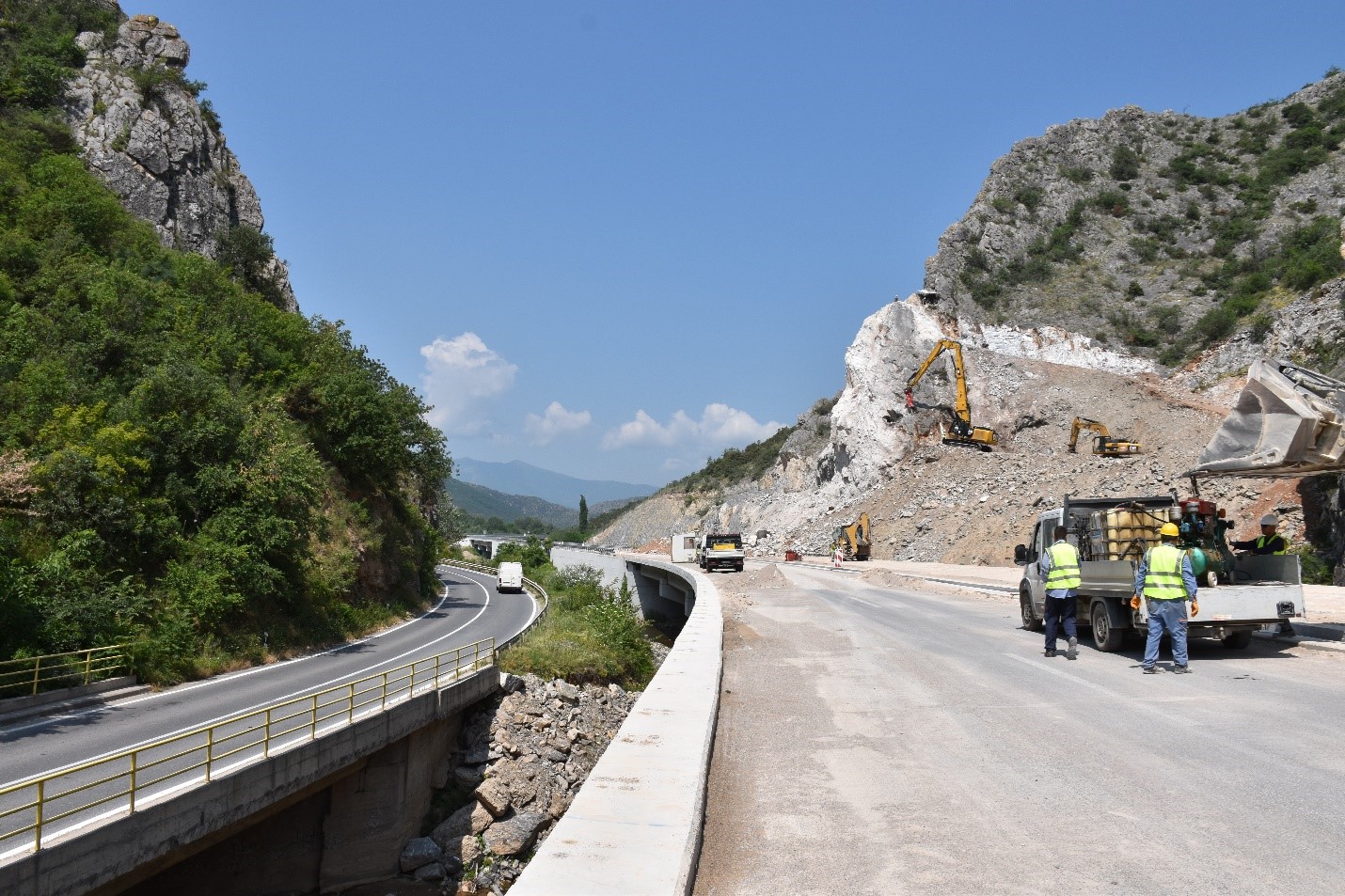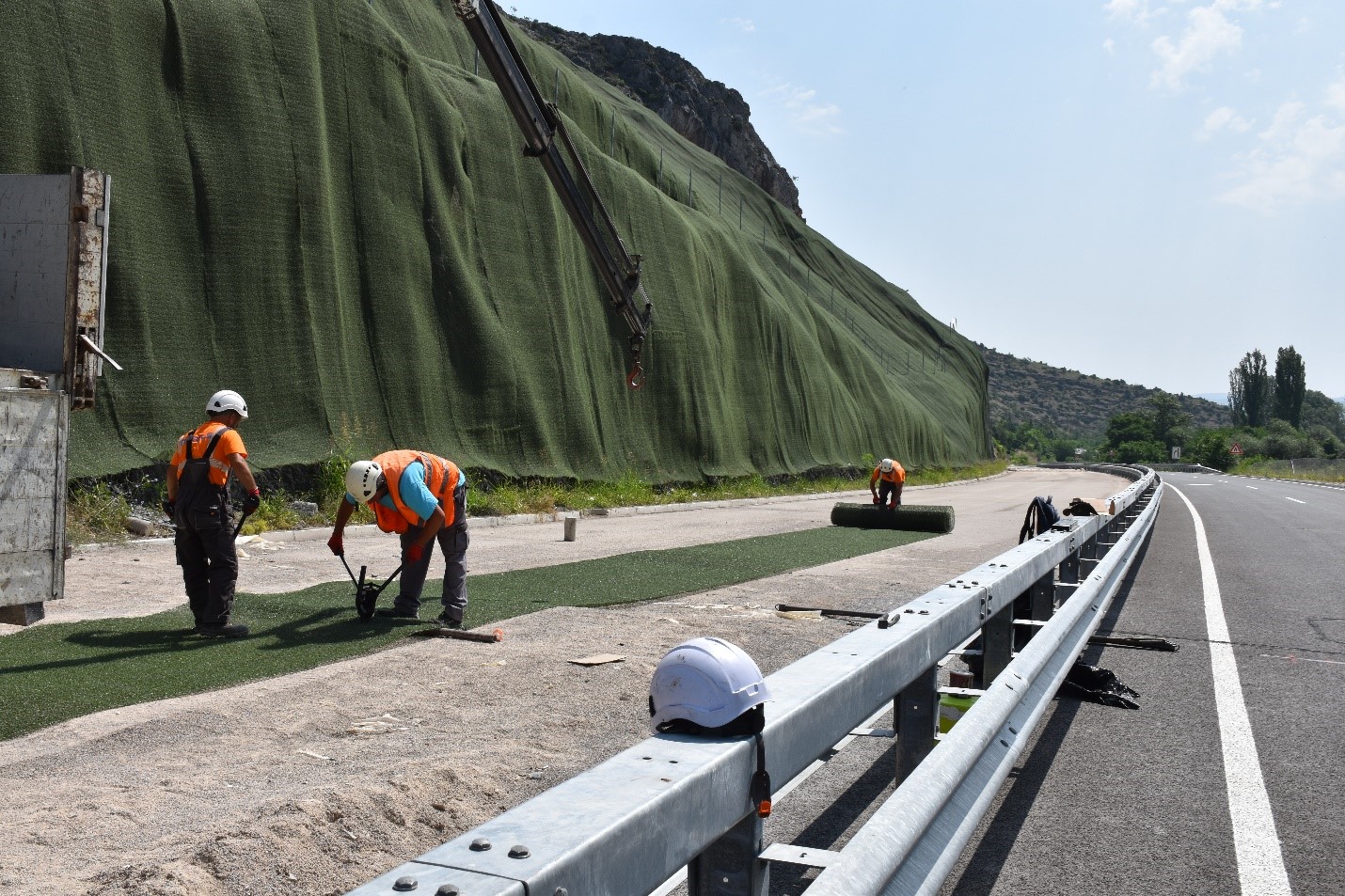During construction works on the second phase of the Farish–Drenovo section of Gradsko–Drenovo expressway, cracks were observed in two about 70 meters high and dangerous rock formations. One of these rocks is located above an already constructed bridge on the left side, posing a potential risk of the bridge collapsing.

For this reason, the Public Enterprise for State Roads (PESR), together with the Contractor and the Supervision Engineer, undertook activities for remediation and stabilization of the slopes along the expressway route. These slopes are actively affected by erosion, which prompted a process for their easing so that they are stabilized, as well as implementation of active erosion control measures.
However, the rocks removing process is dangerous and risky, and therefore must be strictly controlled. The rocks are, namely, being broken down by removing small pieces layer by layer.

Considering that this is a very specific and uncommon process in road construction in rocky terrain, as is the area of the second phase of Farish–Drenovo expressway, we are bringing this operation closer to you both with images and in writing.
To break the dangerous rocks, specific machines and devices are used that apply hydraulic pressure to expand a fitting placed in a drilled hole, creating tensile fractures in the rock.
These machines are generally used in places where blasting is not permitted, as is the case here.
 The rock fragments are carefully let down onto the road to avoid damage, and once the breaking is complete, a protective fence will be installed to prevent small fragments from falling onto the bridge.
The rock fragments are carefully let down onto the road to avoid damage, and once the breaking is complete, a protective fence will be installed to prevent small fragments from falling onto the bridge.
One of the rocks has already been safely removed, and the process of installing a protective net is underway. The other location is the one you see here, where work is progressing slowly due to the high risk involved.
Specifically, the rock is positioned 55 meters above the bridge, and workers are lifted using telescopic cranes onto safety platforms anchored on the secure side of the rock. Throughout the operation, they are secured with safety harnesses.